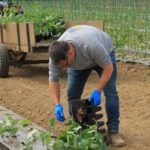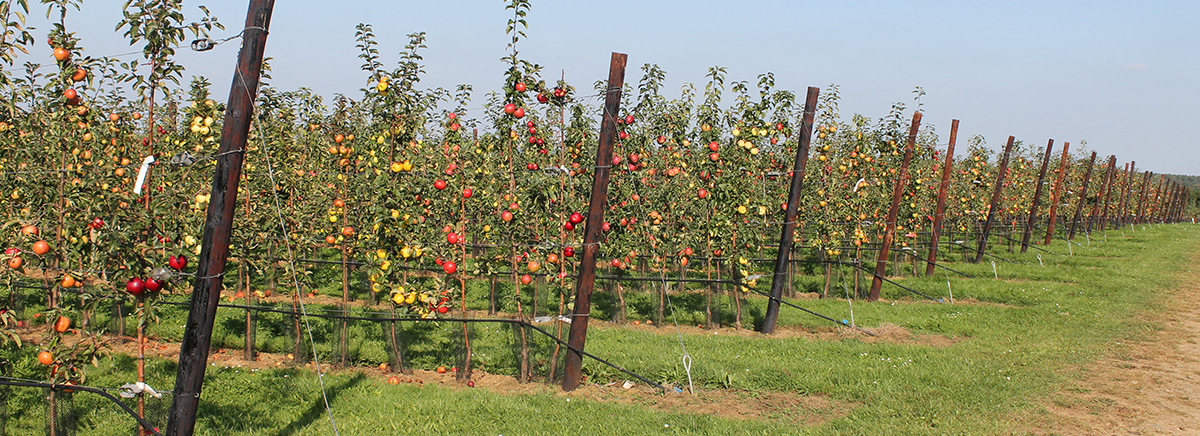Thorough research, carried out internally and in collaboration with academic partners, lies at the heart of our breeding program.
Even though we use modern tools, such as molecular markers, our breeding process is still based on the century old principles of crossing and selecting.
It all starts by crossing 2 parent varieties. Their progeny is then grown into trees, between which we search for that one tree that meets all the current needs.
Parents and R&D
A new apple or pear needs to have high appeal, be tasty, store well, ripen at the optimal time, be productive, have a high pack-out, be disease free, …; oh and yes, it needs to fill a gap in the market.
It all starts with the combination – crossing – of 2 parent varieties. Better3fruit has built up a collection of more than 600 apple and 250 pear varieties and there are a lot more to be found in the world. This implies that there is an almost infinite number of combinations that can be made. The challenge of a breeder lies in deciding which combinations of 2 varieties have the highest probability of resulting in a variety that combines all the desired traits.
The more you know about a variety and the heritability of its traits, the better equipped you are to make that decision. Such research is therefore the foundation of Better3fruit. Our own breeding program is of course a constant source of new data for our breeding and research staff. In addition, we participate in international research projects, support PhD students, collaborate with other breeders and outsource research.
Crossing
Each year the first pear blossoms announce the start of one of the busiest times of the year. Just like bees carry pollen from one flower to another, the Better3fruit team collects pollen from flowers of one variety and manually applies it to flowers of another variety. Each year Better3fruit pollinates about 30.000 flowers, one by one.
In the course of the year, the pollinated flowers will develop into apples and pears containing pips. Every pip is a new, unique variety. These pips are sown out and over the following years cultivated from small seedling plants to actual apple and pear trees.
1st selection
Each year 10.000 grafted trees are planted in the field. Every tree is a new, unique variety. As soon as they yield fruit the selection can start.
It is at this stage of the process that eating apples becomes a profession. Our experienced team evaluates every variety/tree for appearance, taste, texture and storability. This is done weekly at harvest and at monthly intervals throughout storage.
All this data is collated in a database of our own design and processed by our breeders. At the end they select the 100 best varieties from the original 10.000 to continue to the next screening level. The remaining 9.900 are discarded.
2nd selection
At the end of 1st screening we have weeded out the bad and mediocre varieties and have reduced it to a more manageable number of 100 varieties. At this stage we can increase the number of trees per variety and thus have more fruit per variety to evaluate. Now we really put the varieties through the wringer and look at all potential characteristics: appearance, taste, texture, storability, shelf life, production, pack-out and disease tolerance.
After 3 years of prodding and prying at the fruit and trees, our breeders select that 1 elusive variety that scores high for all of the traits. This is the only variety that we deem to have commercial potential and will expose to the scrutiny of our possible commercial partners.
















